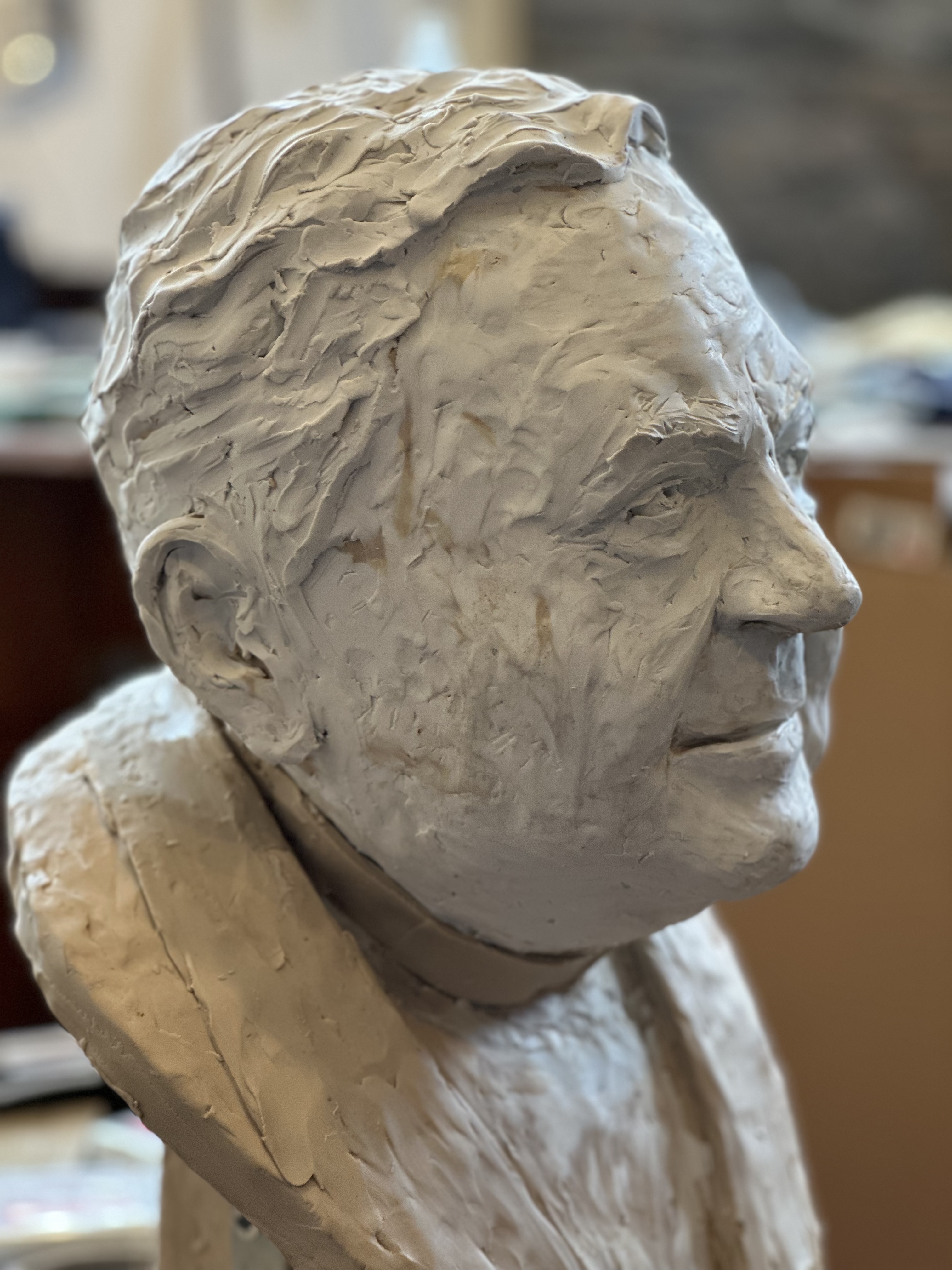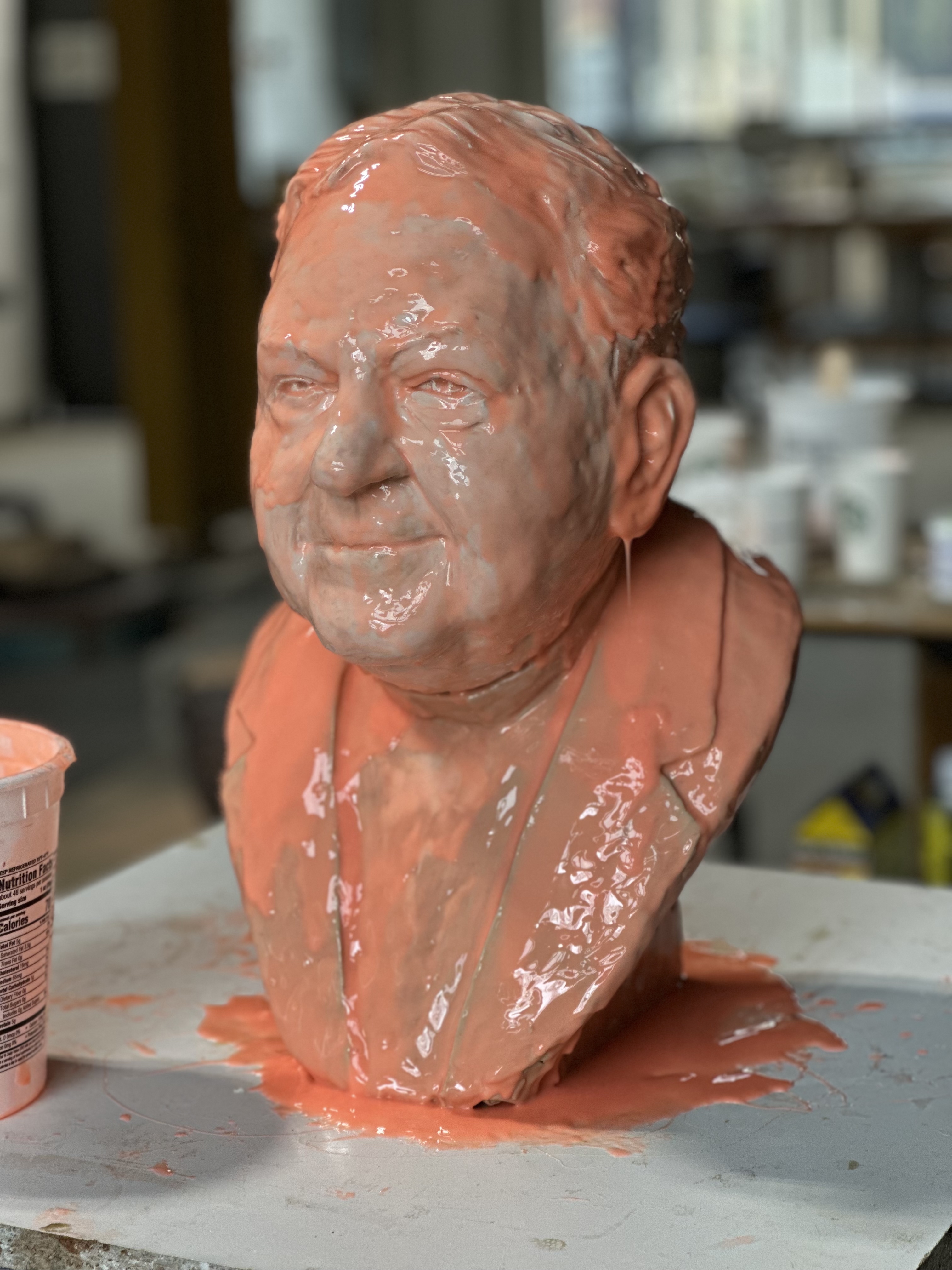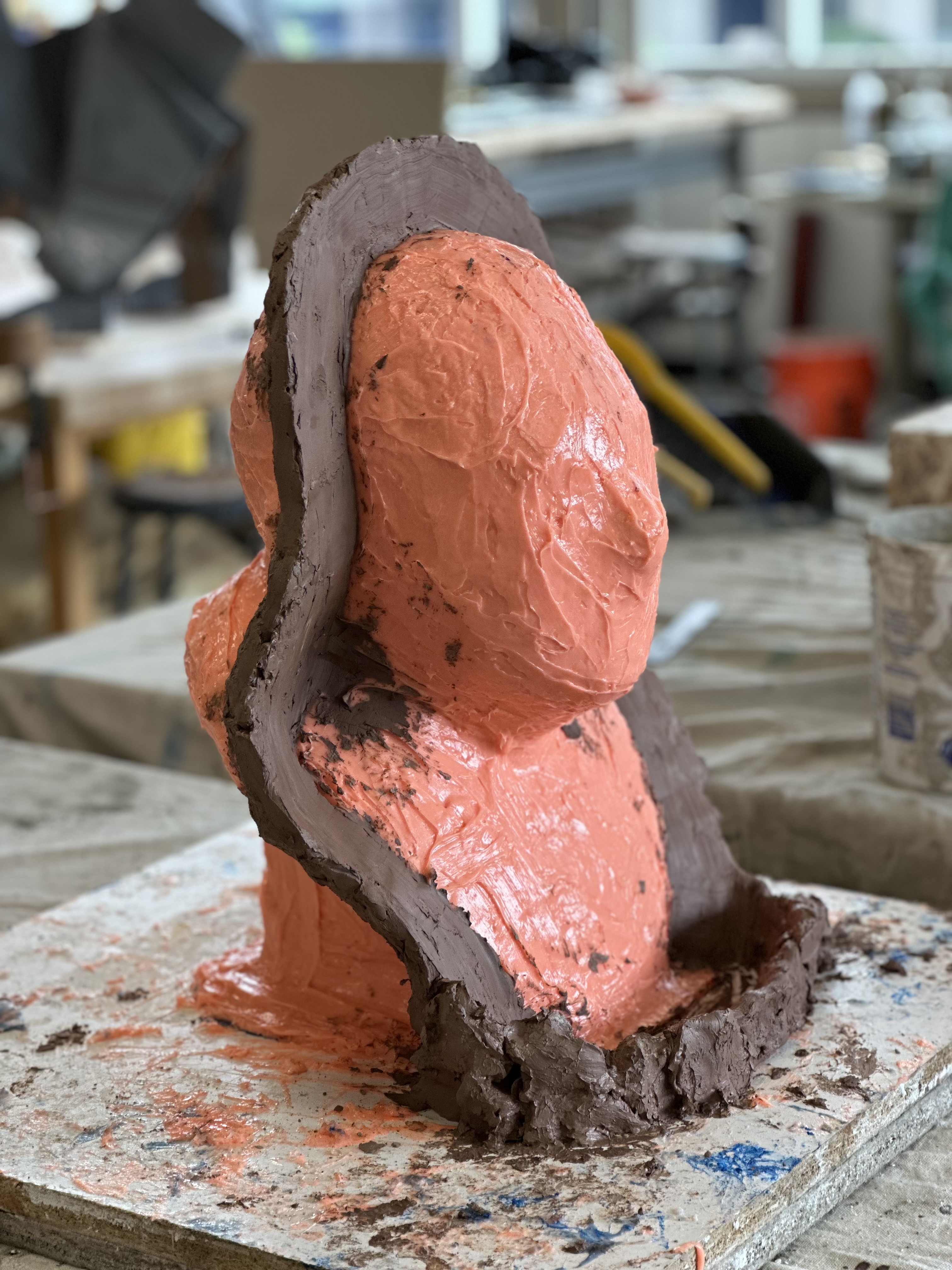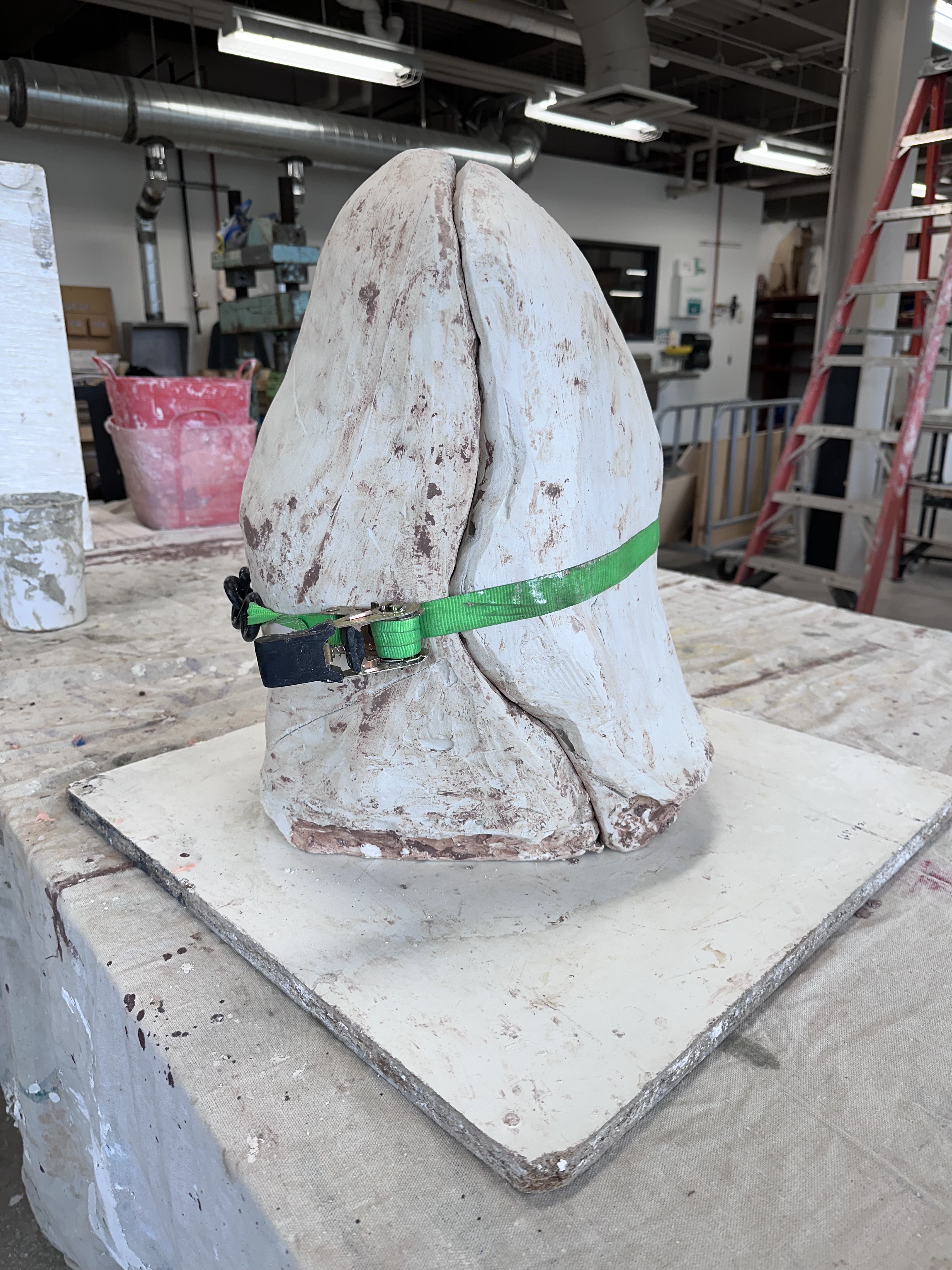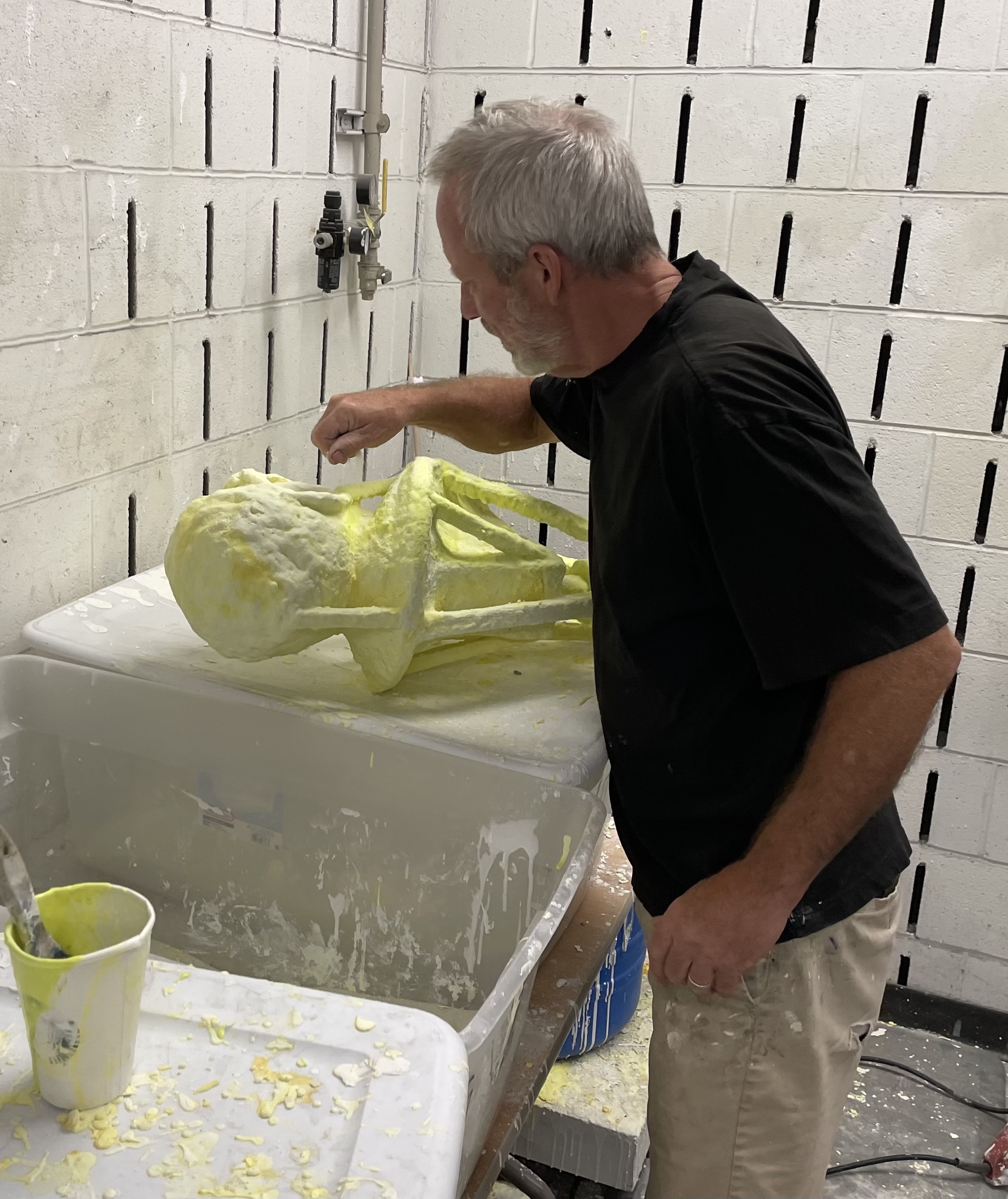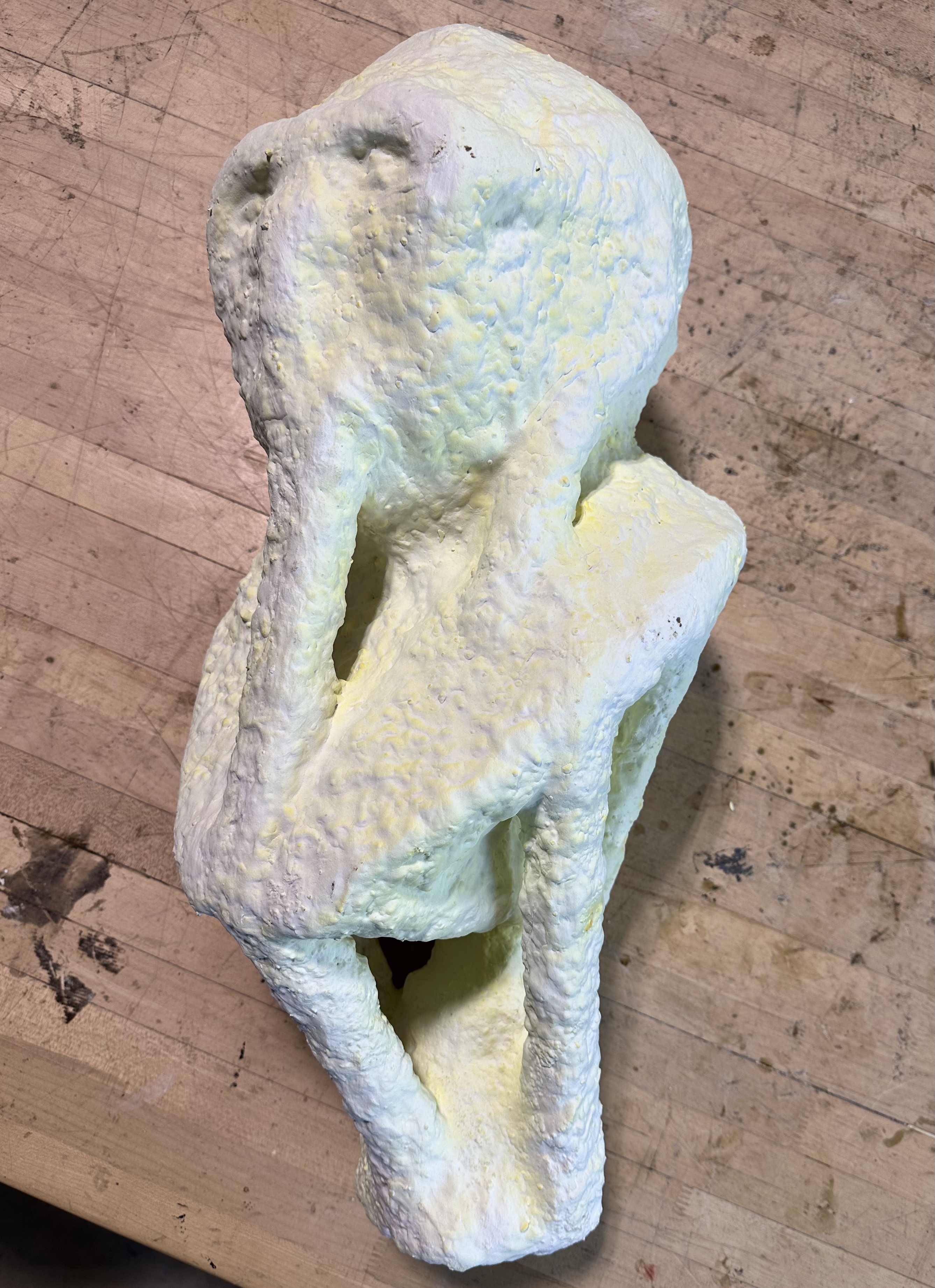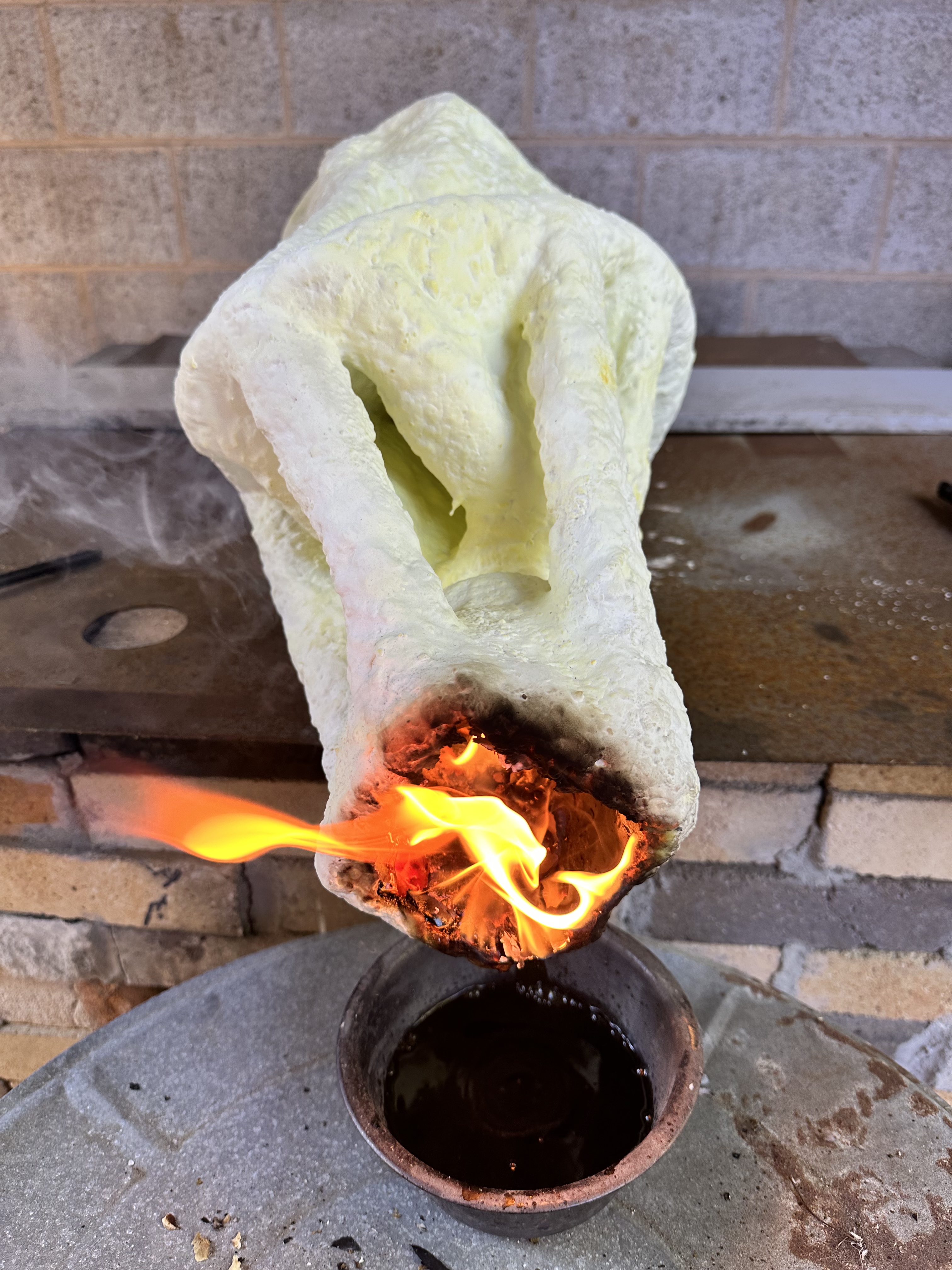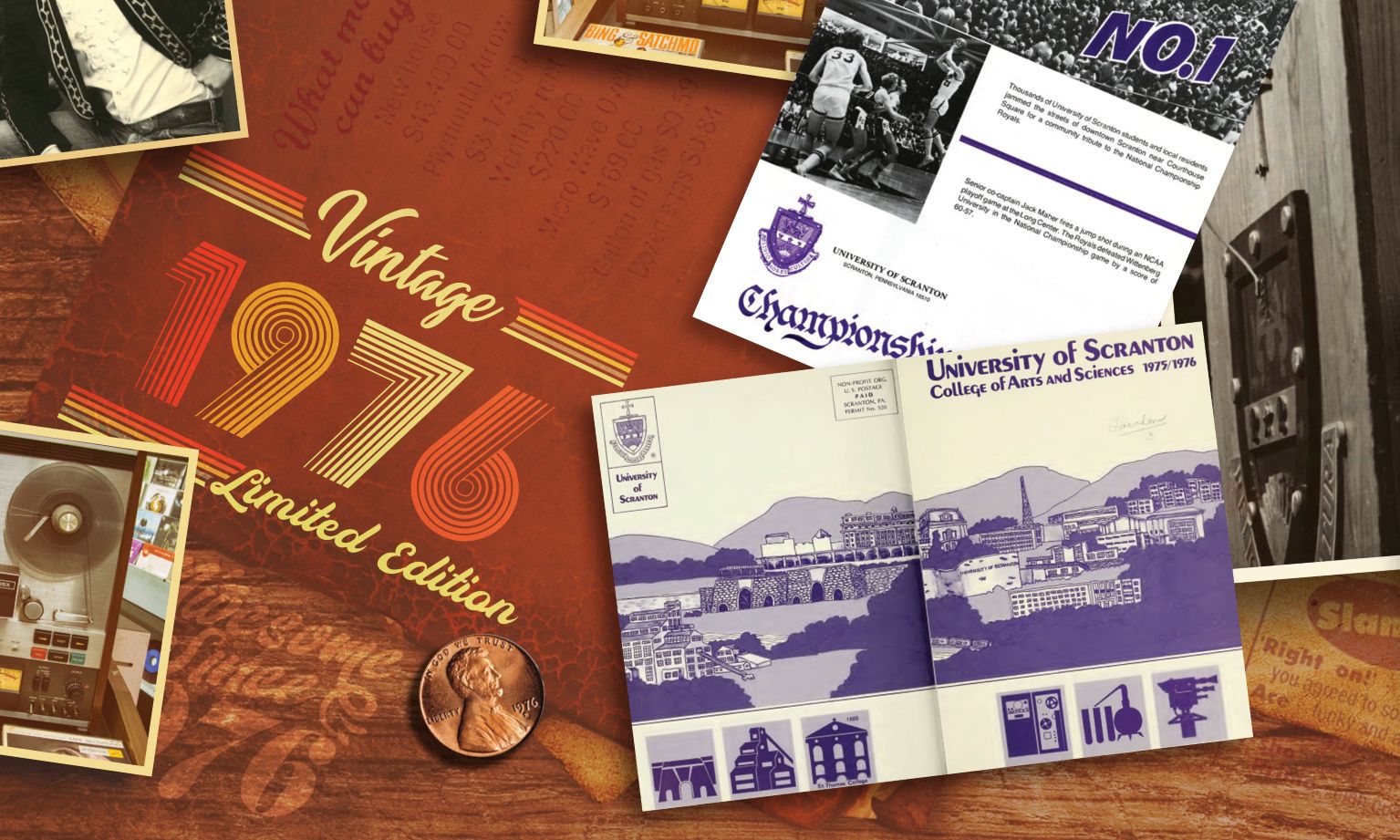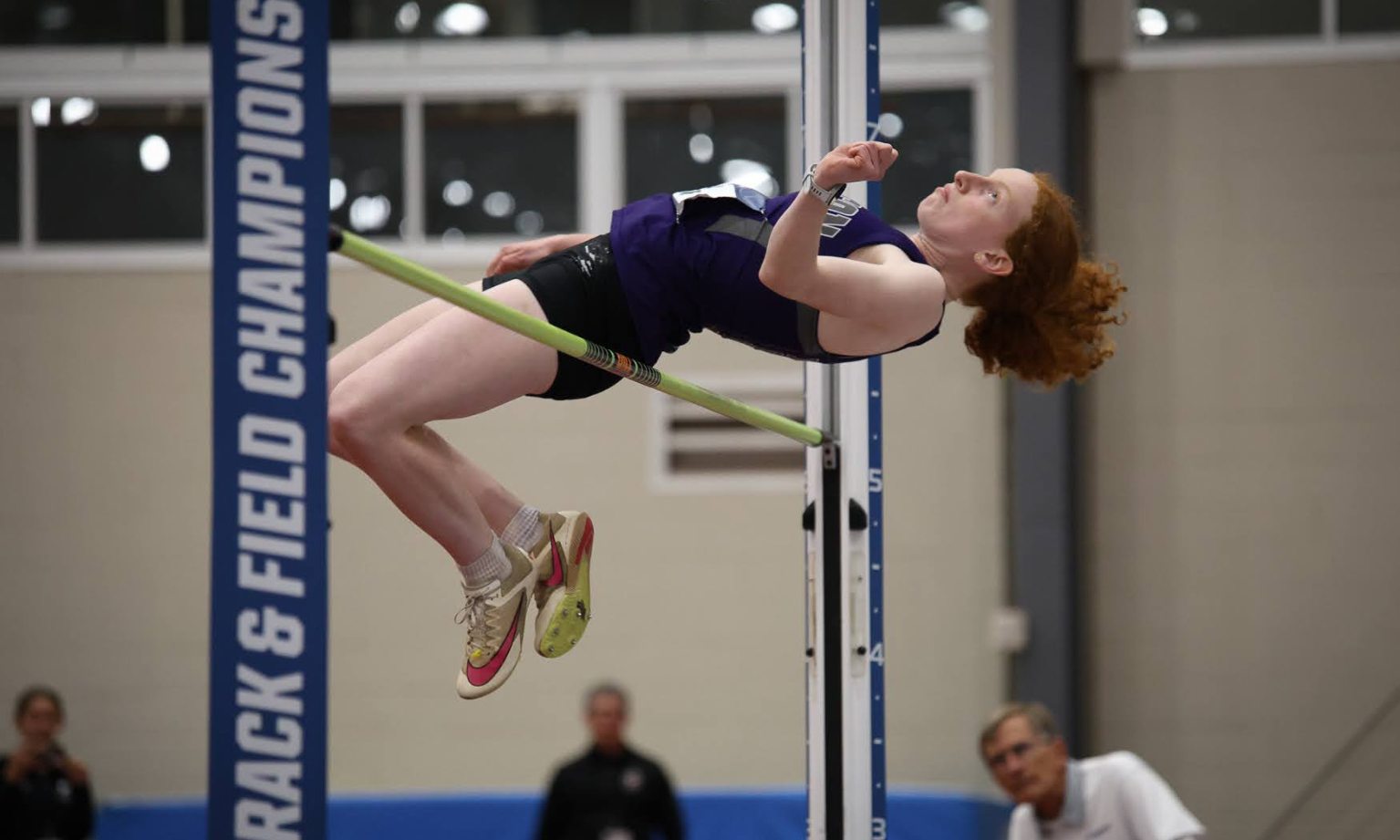A new sculpture will be located on The University of Scranton Rev. J.A. Panuska, S.J. Commons in tribute to the former University president. The Scranton Journal interviewed the sculpture's creator, artist and educator Mark F. Webber.
Webber, a lecturer and assistant professor at Marywood University, discussed the inspiration for the art piece and his creative process, as well as a special connection to Father Panuska.
The artist's work has been exhibited at Bowery Gallery in New York City and the Taglialatella Gallery of Paris. He earned a Bachelor of Arts in painting from the Swain School of Design, New Bedford, Massachusetts, and an MFA in painting from the Parsons School of Design, New York City.
Q: How would you describe your artistic style?
It might be useful to know that the sculptures I’ve made for The University of Scranton are meant to be portraits, so attempting a likeness is the priority. In my paintings, I never work from models, so my process and results are more geared to formal concerns. I think style, when authentic, is a result of the concerns of the artist.
Q. Please share your artistic influences.
The sculpture that I look to when doing a portrait like the one of Father Panuska is more influenced by Rodin or Degas than anyone else.
Q. What provided the initial inspiration for this piece, and how did you work to capture the character and spirit of Father Panuska?
I met Father Panuska a couple of times many years ago. As anyone will tell you, he was a marvelous, inspirational figure. There is a photo I found recently of me presenting my first bronze of Father Fitzpatrick to Father Panuska, from maybe 30 years ago. That is inspiration in a nutshell.
Q. Walk us through your process for creating the art piece that will be featured at the Rev. J.A. Panuska, S.J., Commons.
Well, this is a lengthy, complex process and I’m afraid the description would be too long. But in short, I begin with a clay sketch of the subject, working from as many photos as I can find. I gradually refine it as I become more familiar with the variety of facial expressions that seem appropriate. Then a rubber mold is painted on in seven steps, and that is followed by a plaster “mother mold”. The mother mold is built in two parts that can be separated, and when hardened, it is taken apart and the clay version of the sculpture is removed (essentially destroying it.)
The rubber mold and mother mold are re-assembled and filled with plaster to make a plaster version on the bust. In this case we made two, so that I could make a presentation version painted to appear to be made of bronze.
After this, the rubber mold and mother mold are assembled again for the wax version. This is a challenging process in which melted wax is poured into the mold and after a short time, poured back out, leaving what one hopes is a hollow but sturdy version of the bust within the mold.
After this cools, it is removed from the mold, and a complex system of “sprews” and vents are attached to the wax model - these will allow air and bronze to pass through the final mold when bronze is poured into it.
After a successful bronze pour, which we hope to do soon, the screws and vents will be cut off and the refining of the bronze head begins. When all details are correct, a patina is applied and the bust is mounted, on site, to a pedestal. Three examples of mine can be seen on the campus.
Q. How do you approach creating a sculpture for a specific commission?
I try to get as many photos of the subject as possible. Every nuance in facial expressions becomes interesting and valuable. After that it is a lot of looking. Much more looking than handling clay.
Q. Which of its features are you most excited for the University community and visitors to experience? What message do you hope the public takes away from this specific work?
Right now I am praying for a successful bronze pour. ... If it doesn’t rupture or burst, I’ll be thrilled - I apologize for not being able to see past this at the moment. It’s a long process. But my hope is that anyone who knew Father Panuska will recognize him in my effort. Those who did know him, know the wonderful presence he was, and his commitment to higher learning and culture.


